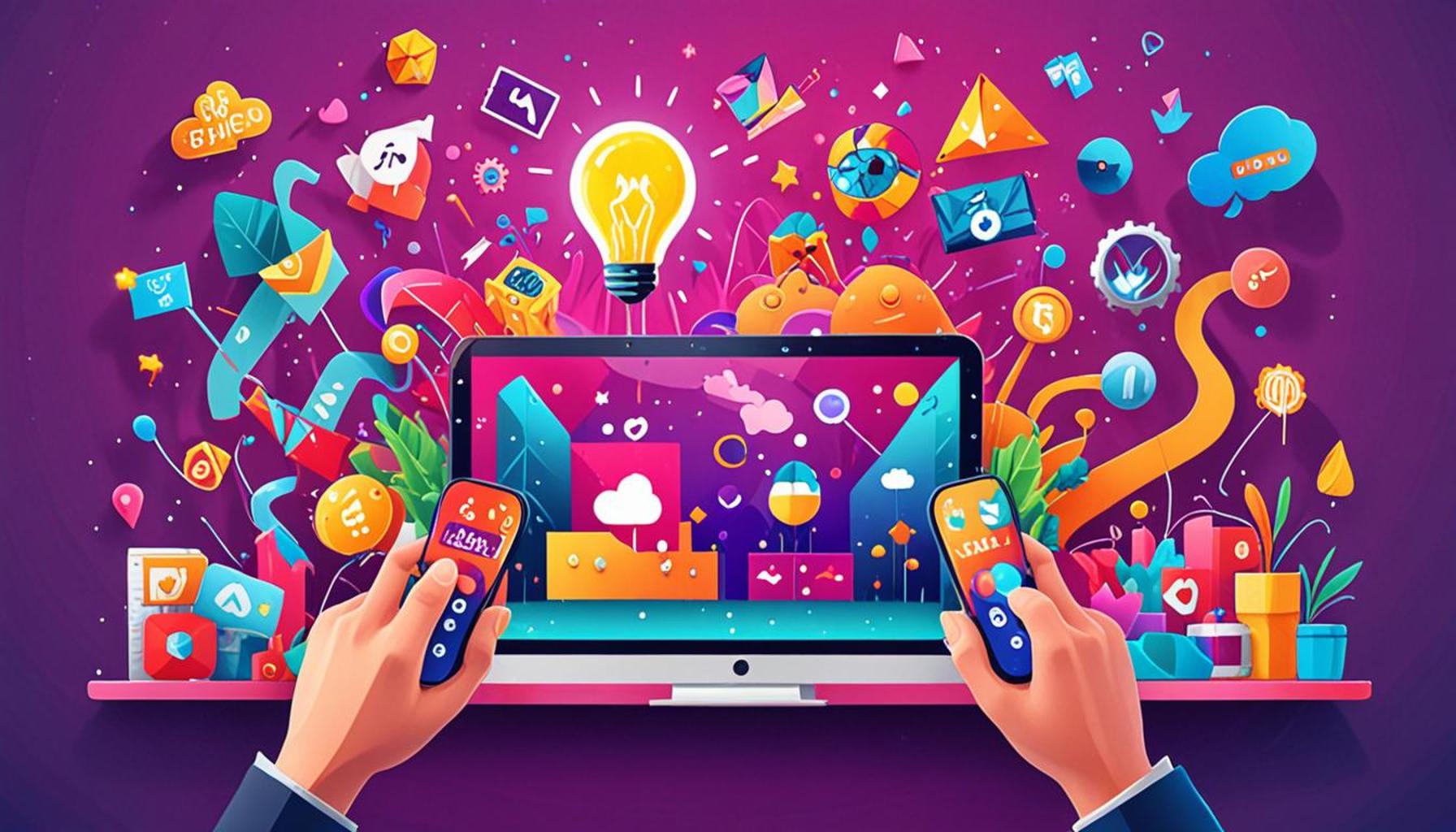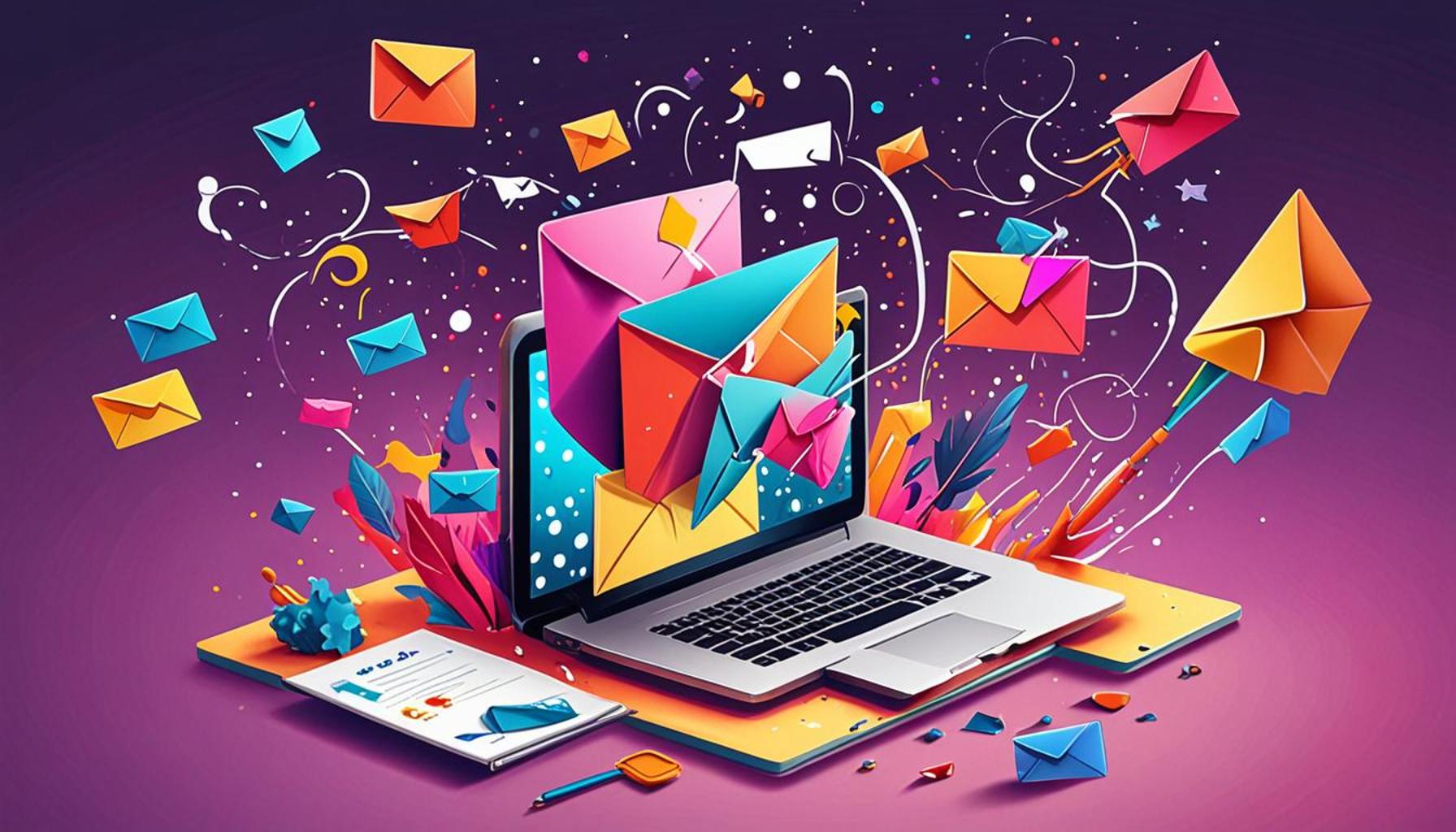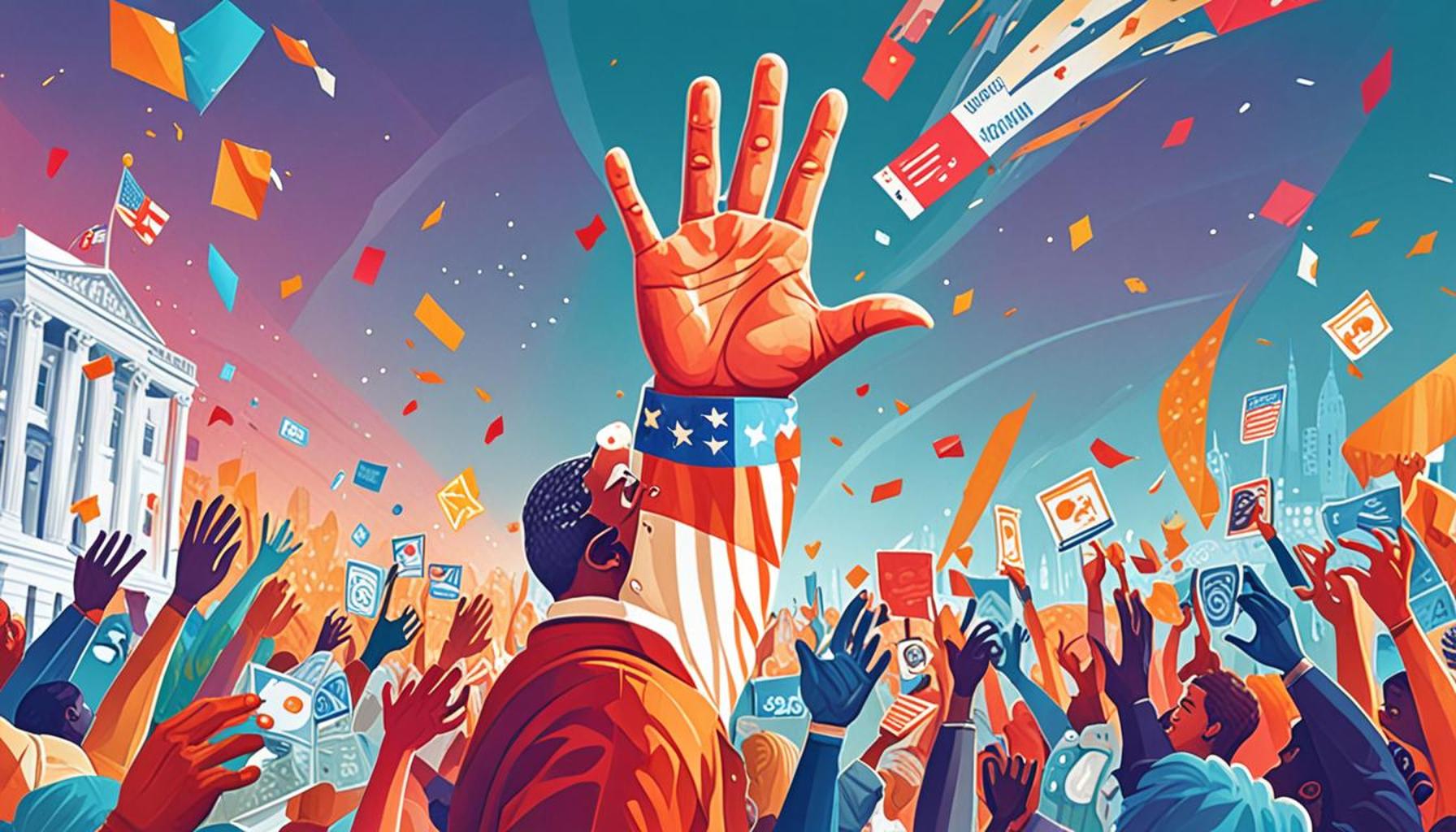How to Use Gamification to Increase Audience Engagement in Digital Marketing Campaigns

Unleashing the Power of Gamification
Imagine a scenario where customers are not just passive recipients of information but active participants, eagerly engaging with your marketing efforts as if they were engrossed in a thrilling video game. This is the essence of gamification, a strategic approach that introduces game-like elements to non-game contexts, transforming everyday activities into engaging and rewarding experiences.
In today’s competitive digital marketing arena, where brands fiercely vie for the attention of consumers, engagement is more vital than ever. Gamification not only captures attention but also retains it through interactive and enjoyable experiences. Consider these compelling benefits:
- Increased Participation: Gamification fosters a sense of involvement through various mechanics such as challenges, rewards, and competitive elements. For instance, loyalty programs that allow consumers to earn points for completing tasks or participating in promotions can significantly boost engagement. Starbucks is a prime example, with their loyalty program where customers earn stars for purchases, incentivizing repeat visits and deeper interaction with the brand.
- Enhanced Learning: When complex information needs to be conveyed, gamification simplifies the learning process through interactive content. For example, educational websites like Kahoot! use game-based quizzes to make learning fun and engaging, facilitating better retention of information. This method is not only effective in educational contexts but can also be applied in corporate training programs to help employees grasp new concepts more rapidly.
- Improved Retention: The use of game mechanics creates memorable experiences that enhance brand loyalty. Brands like Nike have blended gamification with fitness tracking through their Nike+ app, encouraging users not only to track their workouts but to compete with friends, share achievements, and earn badges. This sense of accomplishment keeps users coming back, solidifying their loyalty to the brand.
From reward points in mobile applications to interactive quizzes on corporate websites, brands across various industries are creatively leveraging gamification methods. This innovative strategy fosters a deeper connection between brands and their audiences, often translating into measurable business results.
As you consider implementing gamification into your marketing strategies, it’s crucial to reflect on its potential impact on consumer behavior. The wide-ranging possibilities—from interactive storytelling to virtual reality (VR) experiences—offer endless opportunities for creativity and engagement that can resonate with today’s consumers.
By delving deeper into gamification strategies, you can transform your marketing approach and elevate your digital campaigns. Prepare to capture your audience’s imagination and inspire them to engage, learn, and stay loyal to your brand in ways that traditional marketing methods simply cannot achieve.
SEE ALSO: Click here to read another article
Unlocking Gamification Strategies
As brands look for innovative ways to grab and hold consumer attention, understanding the nuances of gamification in digital marketing becomes essential. It all begins with recognizing what makes games inherently engaging. Players feel a sense of achievement, progress, and competition, all of which can be artfully woven into marketing strategies to enhance audience interaction.
One key to successful gamification lies in the understanding of game mechanics—the elements that make games fun and compelling. When these mechanics are applied to marketing campaigns, they can create captivating experiences that resonate with users. Here are some of the prominent game mechanics to consider:
- Points System: Similar to how players earn points in games, brands can incentivize actions such as purchases, social shares, or feedback with points that can be redeemed for rewards. For example, Sephora’s Beauty Insider program allows customers to accumulate points based on spending, which they can later exchange for exclusive products.
- Challenges and Quests: Creating specific tasks or challenges that customers can complete not only increases engagement but also encourages participation. Companies like Duolingo have mastered this by incorporating daily challenges that motivate users to learn a new language, fostering consistent interaction with the platform.
- Leaderboards: Implementing competitive elements, such as leaderboards, can amplify engagement. By displaying the top performers, brands can ignite a spirit of friendly competition among users. Fitness apps such as Strava utilize leaderboards effectively, allowing users to see how their performances stack against others, which keeps them motivated and engaged.
The importance of personalized experiences in gamification cannot be overstated. When brands tailor their interactive elements to align with user preferences and behaviors, they increase the likelihood of engagement. For instance, incorporating user-generated content into marketing campaigns not only fosters community but also feels rewarding for customers, who see their contributions recognized. Brands like Coca-Cola have utilized this strategy effectively with campaigns that invite consumers to share their own experiences tied to the brand.
Moreover, using progression mechanics—where users can visibly track their advancement within a module or challenge—can significantly enhance the user experience. Gamified elements such as badges, levels, or rewards for reaching certain milestones convey a sense of achievement, which sustains interest and encourages continued participation. Think about how video games reward players for leveling up; similarly, brands can utilize this method by offering exclusive discounts or content to users as they reach new levels in their loyalty programs.
Incorporating these gamification strategies is not merely about sprucing up marketing campaigns; it’s about fundamentally changing how consumers interact with brands. By embedding elements that enhance the experience—be it through competition, reward systems, or personalization—brands can effectively use gamification to bolster audience engagement throughout their digital marketing efforts.
| Advantage | Description |
|---|---|
| Increased Motivation | Gamification elements, such as points, badges, and leaderboards, enhance user motivation by tapping into their competitive spirit. Users are more likely to engage when they are rewarded for their efforts, making them more active participants in campaigns. |
| Enhanced User Experience | Incorporating game-like features creates a compelling user experience that retains attention. Interactive tasks and challenges keep users engaged and make it more likely they will share their experiences, boosting visibility for the brand. |
Gamification can be a transformative strategy in digital marketing. By integrating elements that provide immediate feedback and gratification, businesses can transform mundane interactions into exciting, engaging experiences. Not only does this keep users captivated, but it also drives them to complete actions they might disregard in a non-gamified setting. For instance, brands that implement quizzes, surveys, or contests often see increased participation levels compared to traditional methods. Adding layers of gamification can also lead to a surge in user-generated content, as participants are more inclined to share their achievements with a wider audience, thereby amplifying the campaign’s reach. The inclusion of social sharing options linked to gamified activities could significantly increase engagement and generate buzz around digital marketing efforts. Understanding how to leverage gamification effectively allows marketers to create more personalized experiences, ensuring their audience feels valued and connected to the brand.
YOU MAY ALSO LIKE: Read read another article
Leveraging Technology for Gamification Success
As technology continues to revolutionize the digital marketing landscape, leveraging it becomes crucial for implementing effective gamification strategies. With the rise of mobile applications and interactive platforms, brands have an unprecedented opportunity to engage consumers in dynamic and innovative ways. For instance, mobile game apps can serve as powerful tools not only for engagement but for data collection and customer insights as well.
Integrating augmented reality (AR) with gamification offers an exciting avenue for brands looking to captivate their audience. By embedding AR features into campaigns, companies can encourage users to interact with their products through immersive experiences. For example, IKEA’s Place app allows customers to visualize how furniture would look in their own homes using AR, blending the lines between gameplay and shopping, effectively driving sales and enhancing user engagement.
Another pivotal technology in the realm of gamification is artificial intelligence (AI). AI tools can analyze consumer behaviors and preferences to curate personalized experiences. By leveraging AI-driven analytics, brands can deliver tailored challenges or rewards based on user activity and interactions. For example, Netflix utilizes recommendation algorithms to create a personalized viewing experience, creating a gamified atmosphere where viewers feel they are on a continual journey of discovery, thus keeping users engaged longer.
Social Media as a Gamification Platform
Social media platforms are a goldmine for gamified marketing campaigns. These platforms inherently encourage social interactions, making them ideal for implementing competitive elements. Brands can launch contests that allow users to compete for rewards through specific actions—whether it’s liking, sharing, or creating their own content. The “Ice Bucket Challenge” is an exemplary case where social media-driven gamification not only engaged millions but also raised awareness and funds for ALS research.
Additionally, integrating social sharing into gamification strategies can enhance reach and participation. When user achievements can be shared on platforms like Instagram or Facebook, it creates a viral effect, encouraging others to join in. Platforms like Strava often see users share their exercise stats, which not only builds community but also acts as free advertising for the app.
Analytics as the Cornerstone of Gamification
Underlying all effective gamification strategies is the importance of analytics. Monitoring user interactions and behaviors provides valuable insights that can refine and enhance gamified elements. Tools like Google Analytics and heat mapping can reveal patterns—such as which challenges or rewards are most popular—that can guide future campaigns. This not only ensures that brands remain relevant to their audience but also allows for real-time adjustments that can significantly improve engagement rates.
Incorporating feedback loops further strengthens the efficacy of gamification. Allowing users to voice their opinions about gaming elements can lead to critical insights and adaptations that resonate more deeply with audiences. For example, the gaming company Blizzard Entertainment frequently seeks player feedback to refine and enhance gameplay mechanics in its popular games, resulting in a highly engaged community.
As brands explore various technological avenues for gamification, the main goal remains the same: to create engaging experiences that foster a loyal consumer base. By blending innovation with gamification, brands can significantly enhance audience engagement, making consumers not just participants but active advocates for their brand. The road ahead is paved with exciting possibilities that can redefine the way businesses interact with their consumers.
YOU MAY ALSO LIKE: Read read another article
Conclusion: Embracing Gamification for Enhanced Engagement
In today’s fast-paced digital landscape, gamification emerges as a transformative strategy that not only captures the attention of consumers but also retains their loyalty. By integrating elements such as augmented reality, artificial intelligence, and social media interactions, brands can create a more interactive and personal experience that resonates deeply with audiences. These technologies facilitate exciting possibilities for audience engagement, making consumers feel both valued and motivated to engage with brands.
Additionally, leveraging analytics allows marketers to refine their gamified campaigns continually. Understanding consumer preferences and behaviors becomes essential for tailoring experiences that resonate with the audience, thus driving engagement to new heights. As demonstrated by successful campaigns like the “Ice Bucket Challenge,” gamification harnesses the power of social sharing, ultimately creating a community of advocates who promote the brand organically.
As we look ahead, businesses that prioritize gamification in their digital marketing strategies will likely see significant shifts in audience interaction and brand loyalty. It’s more than just a trend; it’s a crucial pivot towards fostering profound connections with consumers. Companies should remain open to exploring innovative gamification tactics, enabling them to not only enhance engagement but also redefine their market presence. The convergence of technology and creativity in gamified campaigns stands to elevate the consumer experience, making digital marketing not just a transactional relationship but a proactive, engaging journey.


